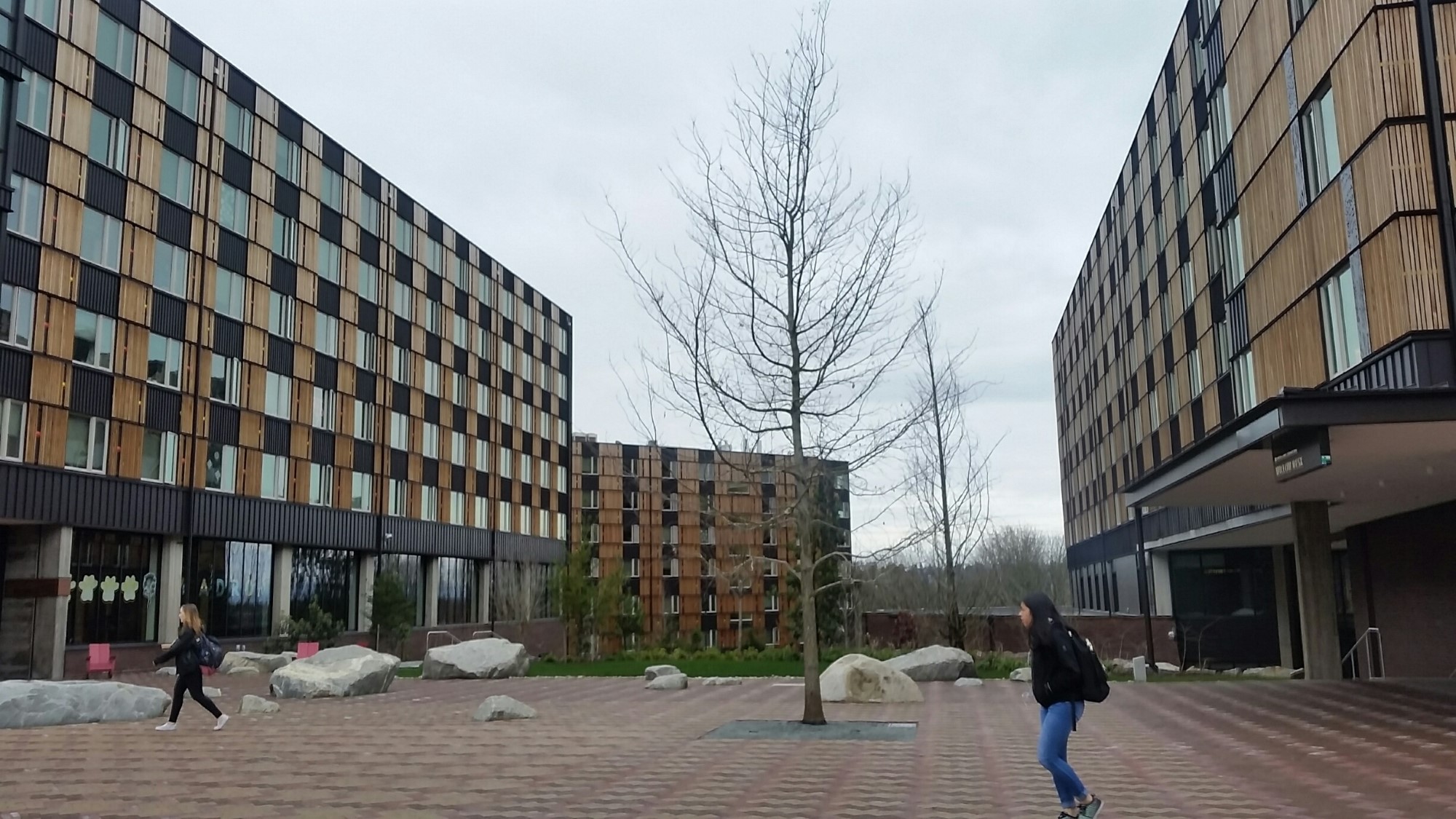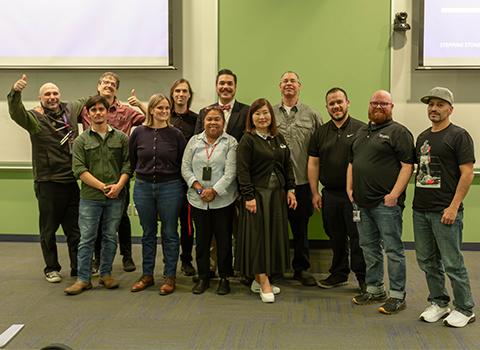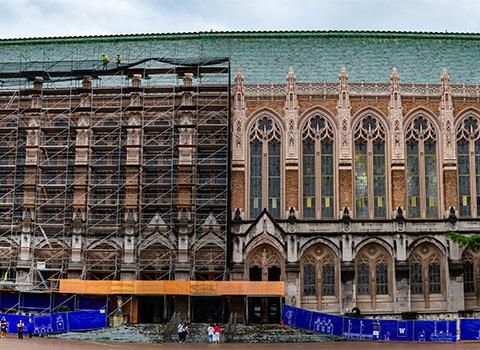We've moved in. Now what?

The birth of a program
The birth of a program
Look around anywhere these days in Seattle, and you’re likely to spot a construction crane or two … or twenty. The building business is booming, and it’s also apparent at the University of Washington. Recently completed projects on the Seattle campus include the Life Sciences Building, the Fluke Hall remodel and north campus housing (Madrona, McCarty and Willow Halls).
What has changed over the past several years, however, is how we plan for the future of these buildings as they become fully-functioning and occupied. The Transition to Occupancy (T20) program is aimed at creating a safe, secure, energy efficient, comfortable and aesthetically pleasing environment for UW buildings and the people who work and study inside them – both when the new buildings go online and throughout their projected lifespan.
The T20 program began as the brainchild of a 2012 Lean team launch to address the lack of clarity and understanding of roles and responsibilities between construction teams and the employees who maintain the buildings long after the builders have left. Those employees also assume responsibility for all the systems within a building, some of which receive data from thousands of smaller devices.
Before T20, all of the operating manuals of a building’s assets, from the fire alarm system to lights, would be kept in binders in hard copy format. In order to repair anything, Facilities personnel would have to wade through hundreds of pages of binders to find the right operating manual, often long after construction was complete and the builder had moved on.
Steve Babinec is a construction manager and a member of the original lean team. He also previously worked as an electrician, so has seen the situation from both sides.
“In the old days, we’d just say, ‘see you later’ and maintenance of the building would be up to Facilities staff who didn’t receive any training,” Babinec says. “It’s definitely a different way of looking at a building,” says Brett Magnuson, an engineer who’s been with the UW for 27 years. “We used to work in silos, and contractors would build a building and hand it off to Facilities and just move on to the next big project. T20 is now the transition, making the process of building maintenance a lot smoother.”
Bringing everyone together
Bringing everyone together
One key partner in T20 is the construction and consulting firm McKinstry, which works with UW staff to provide maintenance and staffing plans in support of the various systems in each building, along with associated operating procedures.
“McKinstry is there to help us, and can work alongside our shops to support our workers,” Magnuson says. “They also help train our staff and bring everyone together – the clients, Capital and Space Management, [Project Delivery] and the shops.”
“Facilities staff need to be trained on everything there is to know about the building, how it operates, its strengths, its weaknesses, and they need easy access to data produced during the design, construction and commissioning process that may provide insight to any issues that will likely arise in the future,” says Mark Barnard, a McKinstry senior program manager.
“Additionally, Facilities needs an operating plan that establishes what systems need to be maintained, at what intervals and what tasks need to be performed,” Barnard says. “They need to know how many people are needed to maintain and operate each building and what their roles and skillsets should be. They need standard operating procedures that provide direction on how to safely operate and test the various systems as well as protocols on what to do if they fail.”
Babinec, the construction manager for the Life Sciences Building, adds, “Our goal as administrators of the T2O process is to provide a measure of confidence to the maintenance and operations staff tasked with caring for these facilities, and that complete and accurate asset information is readily accessible to them. We also ensure that high quality training by competent instructors is provided, that skilled technical assistance is made available while in-house staff are learning how to operate and maintain complex building systems, and timely assistance is provided with resolving warranty and operational issues. All of this combined should ultimately result in an extended facility and asset life cycle.”
Going through T20 for each new building also allows the teams to consider where responsibility lies for some equipment before any fixes are needed. For example, take a fume hood installed to ventilate a laboratory. Does the responsibility for its maintenance and operation belong to Facilities or the department who uses it? Knowing the answers to questions like these is critical to the long term operating success of any building.
“T2O is intended to provide all of these additional tools for each facility at its birth so it has the best chance of living to be 50,” Barnard says.
McKinstry and other T20 program partners are currently working with UW Facilities on 10 building projects (approximately 1.3 million square feet) with a couple more on the horizon. Updates on all major construction projects at the UW are available online.
From two teams to one
From two teams to one
When the T20 program began, construction and operations were in two different departments: Capital Planning & Development (CPD) and Facilities Services. In 2018, the two groups merged into one: UW Facilities. Integrating planning and operations are core to the mission of the new organization.
“CPD is now a part of an integrated UW Facilities group that plans, designs, builds and transitions the UW built environment,” says Jeff Angeley, assistant director of Construction Operations and T2O. “The goal of T20 is to deliver a new facility or renovation while maximizing value for customer end users by securing a stabilized-sustainable transition to occupancy, operations and maintenance. We’re incorporating maintenance needs from the very inception of each building, allowing us to better manage our assets.”
Facilities is also working to develop a portfolio strategy based on providing needed facilities while minimizing maintenance costs, Angeley says. Roles and responsibilities are spelled out and McKinstry acts as the transition service provider and creates preventative maintenance plans.
That’s good news, too, for UW Preventative Maintenance Manager Ryan Gutzwiler. It’s his job to identify, classify and inventory all building equipment, and then develop preventative maintenance plans for each item. This data then becomes part of the asset information in Facilities’ central database. Facilities staff can then use this data to build preventative maintenance plans for different pieces of equipment within buildings and provide guidance to staff about when maintenance is needed. The central database can then be used to auto-generate work orders based on projected maintenance needs.
With around 520 buildings to maintain on the UW Seattle campus, the number of University’s collective assets is in the millions. The inventory and cataloging process will take time, but the information gathered will be priceless in the long term.
“Information is absolutely the crown jewel asset” of T20, Angeley says.



